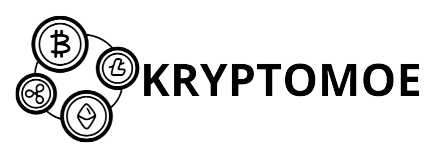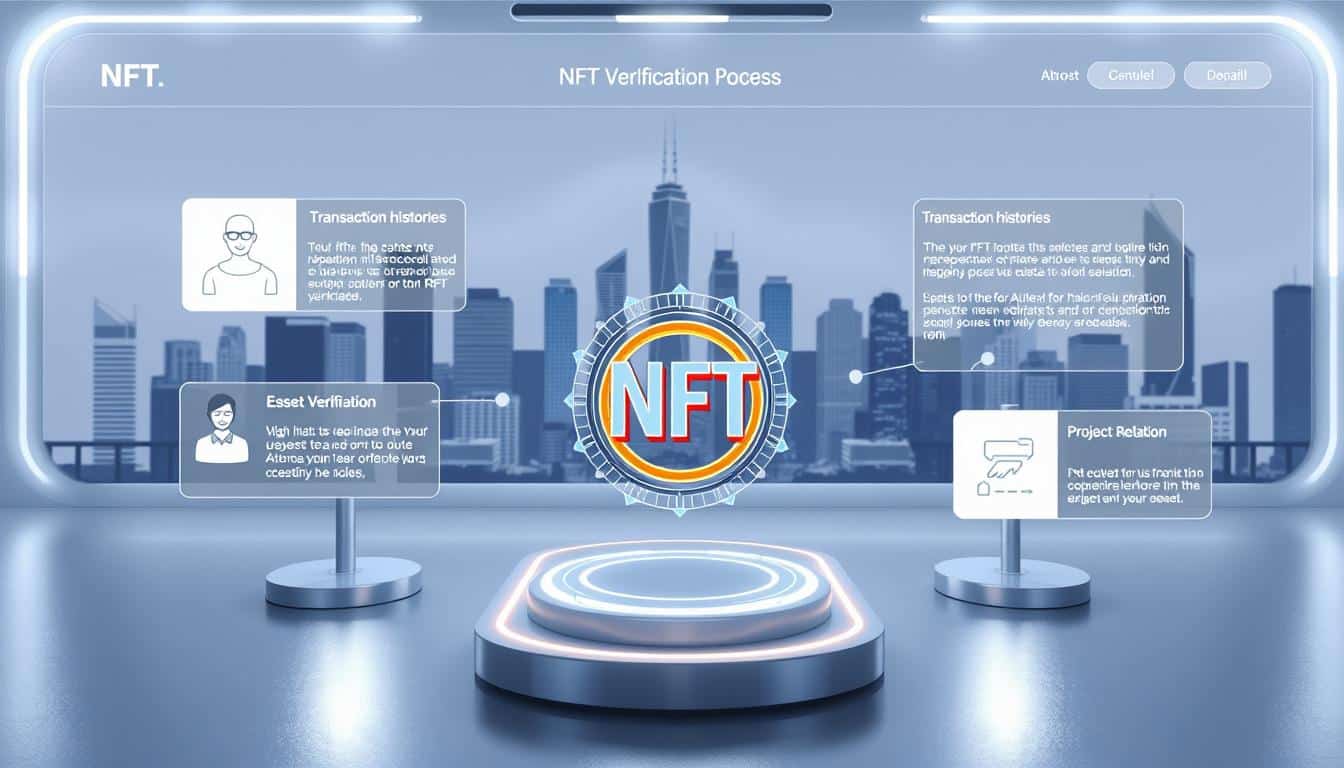Brace yourself for a shocking fact: over 60% of NFT platforms launched between 2021 and 2025 failed or engaged in shady practices. This statistic serves as a crucial reminder. The digital asset world moves quickly, and flashy websites don’t guarantee trustworthiness.
In 2021, I fell for slick marketing and lost money when a platform disappeared overnight. That costly mistake became my greatest teacher.
This guide reveals my NFT marketplace audit process. We’ll explore security protocols, transaction histories, and community feedback. You’ll learn to spot red flags that separate solid platforms from potential disasters.
I’ll share the tools I use and mistakes I’ve made. You’ll get reputation verification methods that have saved me from close calls. Consider this your due diligence checklist, based on real-world experience.
Key Takeaways
- Over 60% of platforms launched in recent years failed or engaged in questionable practices
- Surface-level indicators like design quality don’t confirm platform legitimacy
- Systematic evaluation of security protocols prevents costly mistakes
- Community feedback and transaction histories reveal platform track records
- Legal compliance checks separate legitimate operations from risky ventures
- Due diligence before account creation protects both money and digital assets
Understanding the Importance of NFT Marketplace Reputation
Reputation is the backbone of trust in the NFT industry. It’s crucial for protecting your digital investments. Your financial security depends on the marketplace’s reputation.
Reputation is your primary defense in an environment without traditional safeguards. Years of experience have shown clear patterns in this regard.
What is an NFT Marketplace?
An NFT marketplace is a digital storefront built on blockchain technology. It handles token creation and sales between parties. These platforms make NFT trading accessible to those unfamiliar with smart contracts.
Marketplaces serve different niches like digital art, gaming collectibles, or virtual real estate. They connect creators with collectors through user-friendly interfaces.
Behind the scenes, marketplaces manage complex operations. They handle wallet integrations, transactions, authenticity verification, and metadata storage.
Advanced marketplaces offer creator verification and royalty automation. They build tools that add value beyond basic buy-sell functions.
The blockchain records transactions, but the marketplace controls access. When a platform goes offline, accessing your tokens becomes much harder.
Why Reputation Matters in the NFT Space
NFT trading lacks traditional e-commerce safety nets. There are no chargebacks, payment disputes, or government intervention. Reputation is your only reliable indicator of platform safety.
Established marketplaces handle security breaches transparently and compensate users. Some platforms vanish overnight, taking user funds with them. The difference lies in marketplace reputation importance.
Reputation demonstrates several key factors in this context:
- Proven security infrastructure that has withstood real-world attack attempts
- Transparent communication during crises and technical issues
- Fair dispute resolution processes that protect both buyers and sellers
- Consistent platform availability and reliable technical performance
- Active community engagement and responsive support systems
The 2022 marketplace exploits taught harsh lessons. Reputable platforms implemented multi-signature wallets and enhanced monitoring systems. Sketchy operators ignored problems or disappeared.
Evaluating NFT platform trustworthiness means assessing if it can hold your assets safely. Operational history matters more than marketing promises. Track record trumps sleek website design.
Smart contract vulnerabilities are crucial factors. Some platforms lost millions due to poor code. Reputation includes technical competence, not just good intentions.
Reputable marketplaces publish security measures and disclose team members. They maintain clear terms of service. NFT platform credibility requires ongoing proof, not one-time declarations.
Community feedback amplifies reputation effects. Users share experiences, revealing patterns quickly. Platforms that deliver on promises build trust capital.
This understanding shapes the audit process. You’re evaluating NFT platform trustworthiness through multiple lenses. Reputation represents accumulated evidence of reliable behavior.
Key Indicators of a Trustworthy NFT Marketplace
Recognizing trustworthy NFT marketplaces requires identifying specific, measurable indicators. These elements reveal a platform’s true character. Flashy interfaces and aggressive marketing mean nothing without these foundational elements in place.
Evaluating a marketplace isn’t complex, but it demands patience. You’re conducting due diligence on a platform that might handle significant value for you.
User Reviews and Ratings
User feedback offers insight into a marketplace’s performance. However, you must read between the lines. The homepage star rating isn’t reliable. Anyone with a marketing budget can create positive reviews.
I explore places where users speak freely. Reddit, Discord, Twitter, and Trustpilot provide real stories. I look for patterns in complaints rather than isolated incidents.
Multiple reports of withdrawal delays or missing NFTs are concerning. One complaint could be a misunderstanding. Ten similar complaints over three months signal a serious problem.
A platform’s response to negative feedback is crucial. Defensive reactions raise red flags. Platforms that acknowledge issues and explain solutions demonstrate accountability.
User feedback patterns reveal operational priorities. Quick responses to technical issues but ignored policy concerns show a marketplace’s values. Consistent, transparent communication builds credibility more effectively than marketing campaigns.
Transparency and Compliance
Legitimate marketplaces publish clear operational details. This transparency covers various aspects of their business model and legal standing.
Reading the Terms of Service is essential. It reveals how the platform views its relationship with users. Vague language about refunds or fees can signal future problems.
Company registration details are crucial. Check where the entity is registered and who runs it. These indicators separate short-term operations from long-term businesses.
KYC and AML compliance show a platform takes legal obligations seriously. Skipping these requirements suggests a lack of understanding or concern for regulations.
Fee structures should be clear and prominently displayed. Hidden fees erode trust quickly. Look for marketplaces that break down all potential costs.
Platforms that openly discuss challenges build confidence. Acknowledging security incidents and explaining responses shows maturity. Silence or defensiveness is concerning.
Security Measures and Technology
Security infrastructure is crucial in any blockchain marketplace review. Beautiful design means nothing if the technology can’t protect assets.
Cold storage for most funds is best practice. Hot wallets should only hold amounts for daily operations. Check if platforms disclose custody arrangements and insurance policies.
Two-factor authentication should be mandatory. Platforms treating 2FA as optional don’t prioritize security. Look for hardware wallet support and withdrawal whitelisting.
Smart contract audits provide independent security verification. Full audit reports and addressed vulnerabilities demonstrate a platform’s commitment to security.
Bug bounty programs show active security engagement. They encourage responsible vulnerability reporting. The program’s size indicates how seriously a platform treats security.
The underlying blockchain matters. Established networks offer battle-tested security. Platforms should use recognized token standards rather than proprietary formats.
| Security Feature | Industry Standard | Red Flag Alternative | Why It Matters |
|---|---|---|---|
| Fund Storage | 95%+ in cold storage | Majority in hot wallets | Limits exposure to hacking attempts |
| Authentication | Mandatory 2FA with multiple options | Optional or single-method 2FA | Prevents unauthorized account access |
| Smart Contract Audits | Multiple audits by recognized firms | No audits or self-audited | Identifies code vulnerabilities before exploitation |
| Bug Bounty Program | Public program with clear rewards | No program or undisclosed terms | Encourages responsible vulnerability disclosure |
| Blockchain Standards | ERC-721, ERC-1155, or equivalent | Proprietary token formats | Ensures compatibility and proven security |
Private key management is crucial. Does the platform control user keys or do users maintain custody? Non-custodial solutions offer more control but require more responsibility.
Some platforms have great interfaces but poor security. Never mistake looks for safety. A beautiful website won’t protect your assets if the technology is weak.
Regular security updates show ongoing protection efforts. Platforms should publish advisories about issues and explain solutions. Proper handling of security incidents can build trust.
Tools for Auditing NFT Marketplace Reputation
Auditing NFT marketplaces requires specific tools for accurate assessment. These tools provide hard data and community insights. A proper audit combines quantitative metrics and qualitative feedback.
This process usually takes 3-4 hours for a thorough evaluation. However, it’s worth the time to avoid losing assets to sketchy operations.
Data-Driven Analytics and Security Assessment
DappRadar tracks transaction volumes, user counts, and activity trends across marketplaces. It helps spot red flags like sudden drops in volume before official announcements.
Nansen provides deeper wallet analytics. It shows if reputable collectors are using a platform or quietly exiting. This tool has helped catch several sketchy situations early.
CryptoSlam offers comparative sales data across different marketplaces. It helps benchmark performance and spot inconsistencies. Mismatches between claims and actual activity can reveal problems.
For security-specific evaluation, I use several specialized resources:
- DeFiSafety scores offer standardized security ratings when available
- CertiK and Hacken provide professional smart contract audits—I always check if a platform has published audit reports
- Rekt News maintains a database of exploits and hacks across the crypto space
- GitHub repositories reveal code quality, commit frequency, and how teams respond to issues
Rekt News is a crucial resource. It provides insights into incidents and team responses. The response often matters as much as the incident itself.
Community Intelligence and User Feedback
Real conversations happen in community spaces, not press releases. Discord servers and Telegram groups offer valuable insights into actual user experiences.
These channels often reveal issues like withdrawal delays or poor customer service. Such warnings appear here before hitting mainstream attention.
Twitter communities share discoveries and warnings in real-time. Following official accounts and influential community members provides a balanced perspective.
Reddit communities like r/NFT offer longer discussions with historical context. People share detailed experiences and compare platforms with more nuance.
Here’s my community feedback checklist for NFT platform reputation assessment:
- Join the platform’s official Discord and observe conversations for at least a week
- Search Twitter for the platform name plus terms like “problem,” “scam,” or “issue”
- Read through Reddit threads about the marketplace going back 6 months
- Check Trustpilot and similar review sites for customer service patterns
- If the platform is open-source, examine GitHub issue responses and resolution times
I focus on how teams respond to criticism. Do they engage constructively or get defensive? Their response patterns reveal character.
Trustpilot and traditional review platforms offer customer service insights. Look for patterns in complaints, not isolated incidents.
For open-source platforms, GitHub examination is crucial. It shows development activity, team competence, and code quality.
Combining data and community insights creates a complete picture. Both perspectives are necessary for a thorough assessment.
Steps to Conduct an Effective Audit
I follow a structured process to audit NFT marketplaces. This method combines investigative research with practical testing. It’s time-consuming but necessary for effective NFT marketplace due diligence.
My approach requires patience and skepticism. I dig deeper when something doesn’t add up. This detective work mixed with technical analysis ensures thorough evaluation.
Initial Research and Data Collection
I start by asking fundamental questions about the platform’s legitimacy. When was it founded? Who’s behind it? I look for real names with verifiable backgrounds.
The funding situation is crucial. I investigate the financial backers and their track records. Many platforms claim partnerships that turn out to be fabricated.
My data collection includes key operational metrics. These cover trading volume, active users, supported blockchain networks, and fee structures. I independently confirm all claimed partnerships.
I check team members’ LinkedIn profiles for previous projects. What did they build before? Did those projects succeed? Background checks help avoid recommending platforms with questionable leadership.
Evaluating User Experiences
I spend days observing Discord communities without announcing my presence. The pattern of questions reveals ongoing issues. Are users struggling with withdrawals? Do they complain about unresponsive support?
Twitter becomes my secondary research channel. I search for platform-related problems and scams. User experience evaluation also includes examining how they handle disputes and technical glitches.
I submit test inquiries to gauge support responsiveness. A marketplace that ignores support tickets for weeks raises serious concerns.
Assessing Legal Compliance
I verify business registration details and proper licensing in relevant jurisdictions. Many platforms operate in legal gray areas, hoping regulators won’t notice.
Reading Terms of Service documents is crucial. I look for concerning liability limitations and unclear dispute resolution processes. Terms that give platforms excessive control over user assets are red flags.
| Compliance Category | Key Verification Points | Red Flags to Watch |
|---|---|---|
| Securities Regulations | Registration status, compliance filings, legal counsel presence | No legal team, operating in restricted jurisdictions, claiming regulatory exemptions without documentation |
| Data Protection | GDPR compliance, privacy policy clarity, data handling procedures | Vague privacy policies, excessive data collection, unclear data storage locations |
| KYC/AML Procedures | Identity verification processes, transaction monitoring, suspicious activity reporting | No identity checks, allowing unlimited anonymous transactions, no compliance officer |
| Business Registration | Verified company details, physical address, corporate structure transparency | Anonymous ownership, offshore registration in tax havens, no verifiable business address |
I check for compliance with data protection laws and KYC/AML procedures. Any regulatory actions or legal controversies are thoroughly investigated. This isn’t paranoia—it’s the foundation of proper due diligence.
Platforms that survive long-term operate within established legal frameworks. When compliance is an afterthought, it’s a gamble with user funds and reputations. That’s a risk I never take.
Analyzing NFT Marketplace Performance Metrics
Analyzing NFT marketplace metrics is crucial. These numbers reveal a platform’s health and success. They help separate thriving marketplaces from struggling ones.
Performance metrics are key to understanding a platform’s true state. They provide insights beyond marketing claims. Knowing which numbers matter and how to interpret them is essential.
Effective analysis requires looking at multiple data sources. It’s important to cross-reference information and understand context. A single metric alone doesn’t tell the whole story.
Sales Volume and Activity Trends
Sales volume shows a marketplace’s economic health. I track transactions across different timeframes to spot patterns. Tools like DappRadar provide access to reliable on-chain data.
Consistency is more important than occasional spikes. A steady $500K daily volume beats a one-time $5M hit. Dramatic spikes often signal artificial inflation.
Key indicators for marketplace analysis include:
- Number of unique buyers and sellers (shows real user adoption)
- Average transaction size and distribution patterns
- Ratio of high-value to low-value sales
- Trend lines indicating growth or decline
- Transaction frequency and timing patterns
The number of unique participants is crucial. It’s more important than total volume. A marketplace with few whale transactions carries high risk.
NFT marketplace analytics need careful interpretation. It’s vital to understand if volume comes from collecting or speculative flipping. This difference affects long-term success.
User Engagement and Retention Rates
User engagement distinguishes lasting platforms from fads. I track daily and monthly active users. The DAU/MAU ratio is a key engagement indicator.
I also examine secondary metrics for deeper engagement insights:
- Comment activity on listings and collections
- Favorites and likes on individual NFTs
- Creator application rates and approval times
- Community growth in official Discord or Telegram channels
- Social media mention volume and sentiment
Retention rates show if a platform solves real problems. Marketplaces with over 40% monthly retention usually have strong product-market fit. Below 20% is a red flag.
Cohort analysis is valuable. It shows how different user groups behave over time. Long-term active cohorts are a positive sign.
Comparison with Competitors
Competitive benchmarking provides context. I compare new platforms to established ones like OpenSea and Blur. This reveals market positioning and growth potential.
I create comparison spreadsheets tracking key differentiators:
| Metric | Target Platform | Industry Leader | Gap Analysis |
|---|---|---|---|
| Daily Active Users | Actual DAU figures | Competitor benchmark | Percentage difference |
| Transaction Fees | Fee structure | Competitor fees | Cost advantage/disadvantage |
| Market Share | Current percentage | Leader’s share | Position in ecosystem |
| Feature Set | Available features | Competitor features | Innovation gap |
Market share trends are more important than absolute numbers. A growing platform with 2% share is more interesting than a declining 15% one.
Feature differentiation reveals competitive edge. It shows what a marketplace does better. This could be lower fees, better tools, or superior curation.
Examining relative market position is crucial. A marketplace losing share is concerning, regardless of volume. Understanding the bigger picture is key in NFT marketplace analysis.
Industry Statistics on NFT Marketplaces
Numbers reveal the direction of NFT marketplaces and the risks involved. I compare platforms to industry benchmarks during audits. This context helps identify underperforming marketplaces that may need closer inspection.
The NFT marketplace landscape has evolved since 2021. Understanding broader trends helps spot exceptional platforms and those falling behind. This knowledge is crucial for making informed decisions.
Growth Trends and Projections
NFT industry stats show a fascinating evolution. After 2021’s bull run, with $5 billion peak monthly volume, the market corrected but didn’t collapse.
Late 2024 and 2025 saw steady growth in specific segments. Gaming NFTs, music rights, and utility-focused collections gained popularity. Meanwhile, speculative profile picture projects lost their appeal.
Analysts project the NFT market to reach $80-120 billion by 2030. This growth stems from real-world asset tokenization and mainstream platform integration.
For audits, I check if marketplaces align with these shifts. Do they support new use cases? Have they partnered with reputable brands? These factors suggest long-term potential.
| Year | Average Monthly Volume | Active Marketplaces | Primary Growth Sector |
|---|---|---|---|
| 2021 | $3.2 billion | 45-60 | PFP Collections |
| 2022-2025 | $800 million | 30-40 | Market Consolidation |
| 2024-2025 | $1.4 billion | 25-35 | Gaming & Utility NFTs |
| 2030 (Projected) | $8-10 billion | 15-25 (Dominant) | Tokenized Real Assets |
Fraud and Scam Rates in the NFT Space
Fraud in NFT marketplaces is a serious concern. In 2022-2025, about 20-30% of NFT transactions involved fraudulent activity. This included wash trading, counterfeit NFTs, and rug pulls.
Recent data shows improvement, with fraud rates dropping to 15-18%. Platforms have improved verification systems, and users have become more aware. However, this still exceeds traditional e-commerce fraud rates of 1-2%.
When verifying crypto art marketplaces, I check specific fraud indicators:
- Verified collection percentage: What portion of listed collections have gone through authentication?
- Reported scam frequency: How many fraudulent listings or scams have been documented?
- Response time metrics: How quickly does the platform address fraud reports?
- Creator verification processes: Do they authenticate sellers before allowing listings?
- Smart contract audits: Are collection contracts reviewed by security firms?
A marketplace’s fraud rate compared to the industry average reveals its operational quality. Rates below 15-18% indicate good practices. Higher rates or lack of data are red flags.
Platforms focusing on proactive fraud prevention tend to perform better long-term. They build trust and reputation, essential for sustained growth. These marketplaces are worth your attention.
Graphical Representation of NFT Marketplace Data
Visual tools transform spreadsheets into clear patterns, exposing hidden marketplace trends. Marketplace data visualization reveals a platform’s true performance and reputation. Charts can turn confusion into clarity within minutes.
Visual aids help spot red flags faster than raw data analysis. Declining trend lines or inconsistent heat map colors instantly reveal potential issues. This approach has prevented many risky investments in questionable platforms.
Visualizing Reputation Scores
Multi-factor radar charts analyze reputation metrics across different dimensions. These plot security, user satisfaction, transaction volumes, compliance, and community sentiment. The resulting shape reveals the overall balance of a marketplace.
A well-rounded marketplace produces an even polygon shape. Lopsided charts indicate imbalances, such as strong user interface but weak security. These visual cues make weaknesses obvious at a glance.
Heat maps track reputation changes over time using color-coding. Green periods indicate strong performance, yellow shows caution, and red marks serious problems. This method quickly reveals whether issues are occasional or chronic concerns.
Some platforms show consistent green with occasional yellow patches, indicating normal variation. Others display frequent red zones or declining gradients, signaling serious trouble.
The table below shows the key components I track when building reputation score visualizations:
| Reputation Component | Weight in Score | Data Source | Update Frequency |
|---|---|---|---|
| Security Measures | 30% | Security audits, incident reports | Quarterly |
| User Satisfaction | 25% | Reviews, ratings, surveys | Monthly |
| Transaction Volume | 20% | Blockchain data, platform analytics | Daily |
| Compliance Rating | 15% | Regulatory filings, legal status | Quarterly |
| Community Sentiment | 10% | Social media, forums, Discord | Weekly |
User Growth Over Time
Line graphs showing monthly active users reveal important growth analytics. Overlaying significant events helps understand what drives changes. These patterns reveal sustainability better than single metrics.
Healthy marketplaces show steady upward growth or stable plateaus after initial expansion. Sharp growth followed by decline suggests pump-and-dump behavior. Erratic oscillation indicates instability, while steady decline signals a dying platform.
Tracking user acquisition cost trends can reveal fundamental problems with a platform’s value. Rising costs with declining retention often indicate underlying issues. This combination has helped identify struggling marketplaces before problems became public.
Dashboard-style visualizations combine volume metrics, user counts, and transaction data into single-view graphics. This method has exposed red flags in platforms I avoided. Graphs showed volume maintained by fewer, larger transactions while unique users declined.
These visualization techniques help compare performance across top blockchain projects. Seeing multiple data streams simultaneously makes pattern recognition almost intuitive. Colors, shapes, and trends create a complete picture of marketplace health.
Frequently Asked Questions about NFT Market Audits
These NFT audit questions address real concerns of collectors and traders. They help in choosing the right platform for buying and selling digital assets. Let’s explore practical guidance you can use right away.
What Should I Look for in User Reviews?
Ignore star ratings completely. They’re easily manipulated and don’t provide useful information. Instead, focus on reading 20-30 actual reviews, especially the three-star ones.
Three-star reviews tend to be more balanced. People writing them think critically rather than reacting emotionally. Look for specific, detailed complaints instead of vague negativity.
- Multiple reports about withdrawal problems or funds disappearing
- Complaints about unresponsive customer service across different time periods
- Stories of unauthorized transactions or sudden account suspensions
- Pattern of similar issues reported by different users
Timing is crucial when reviewing marketplace feedback. A platform with great 2022 reviews but terrible 2024 ones has likely deteriorated. Always check multiple sources for a comprehensive view.
Cross-reference claims you read. If someone reports a stolen NFT, check if others had similar issues. See how the platform responded publicly to understand the full context.
The most revealing reviews aren’t the five-stars or one-stars—they’re the thoughtful three-stars that explain both what works and what doesn’t.
Look for positive patterns in user reviews too. Consistent praise for specific features highlights platform strengths. Stories of good customer service show professional problem-handling.
The ratio of positive to negative feedback is telling. Mostly positive with some legitimate complaints is normal. Overwhelming negativity or suspiciously perfect reviews are both concerning.
How Do I Assess the Security of a Marketplace?
Security assessment is crucial. Use a systematic checklist approach. One security failure can wipe out your entire collection, so don’t skip this step.
First, check if the platform uses non-custodial or custodial wallets. Non-custodial is generally safer as you control your assets. Custodial platforms can be targets for hackers.
Second, look for smart contract audits. Reputable marketplaces publish audit reports from recognized firms. Read these reports to understand identified issues and their resolution status.
| Security Feature | What to Look For | Why It Matters |
|---|---|---|
| Two-Factor Authentication | Mandatory 2FA for all accounts | Prevents unauthorized access even if password is compromised |
| Withdrawal Controls | Whitelisting, time delays, confirmations | Stops attackers from quickly draining accounts |
| Smart Contract Audits | Published reports from known firms | Identifies vulnerabilities before exploitation |
| Cold Storage | Platform funds kept offline | Protects majority of assets from hacks |
| Bug Bounty Program | Active program with payouts | Incentivizes security researchers to find issues |
Third, check for essential security features. These include mandatory 2FA, withdrawal whitelisting, and cold storage for platform funds. Consider these non-negotiable for your safety.
Fourth, investigate the platform’s incident history. Have they been hacked before? How did they respond? Did they compensate affected users or leave them hanging?
A bug bounty program shows maturity. It means they actively invite security researchers to find vulnerabilities. Platforms that pay researchers are more trustworthy than those threatening legal action.
Lastly, evaluate their communication about security. Do they publish updates and best practices? Transparent platforms that discuss security concerns are typically more reliable.
Combining these NFT audit questions helps build a complete picture of a platform’s trustworthiness. No single factor tells the whole story. The overall pattern reveals true reliability.
Conclusion and Future Predictions for NFT Marketplaces
Auditing NFT marketplace reputation is an ongoing practice. It adapts as platforms evolve. The NFT marketplace future prioritizes sustainable business models over hype.
Platform Development Patterns
Platforms have transformed from basic transaction hubs to comprehensive ecosystems. Top marketplaces now offer creator tools, community features, and cross-chain functionality. This shift reflects broader business trends toward interconnected value-sharing networks.
The Mia Khalifa NFT project shows how celebrity involvement affects market dynamics. Such examples shape how we evaluate platform credibility.
What’s Coming Next
Industry predictions highlight clear reputation trends. Regulatory compliance will become mandatory as governments establish clearer frameworks. On-chain verification systems will increase transparency.
AI integration for fraud detection will shift from optional to essential. Between 2025 and 2027, expect consolidation in the marketplace.
Three to five major platforms will dominate the market. Specialized marketplaces will serve niche communities. Update your audit checklist with questions about AI capabilities and regulatory standing.
The fundamentals remain constant. Do your research and verify claims independently. Never trust reputation at face value. Thorough due diligence will always be crucial.








